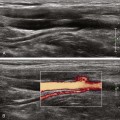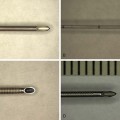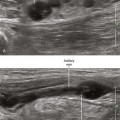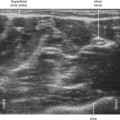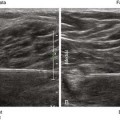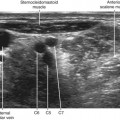7 Spatial Compound Imaging
One benefit of the use of spatial compound imaging is the reduction of angle-dependent artifacts (Table 7-1). Speckle is the granular appearance of a sonographic image that results from scattering of the ultrasound beam from small tissue reflectors. This speckle artifact results in the grainy appearance observed on sonograms, representing noise in the image. Improved image quality may be obtained by using spatial compound imaging, which can reduce speckle noise.
Table 7-1 Advantages and Disadvantages of Spatial Compound Imaging
| Advantages | Disadvantages |
|---|---|
| Needle tip imaging | Limited angle effects (typically <20 degrees) |
| Nerve border definition | |
| Fascia contours | |
| Imaging around bone |
